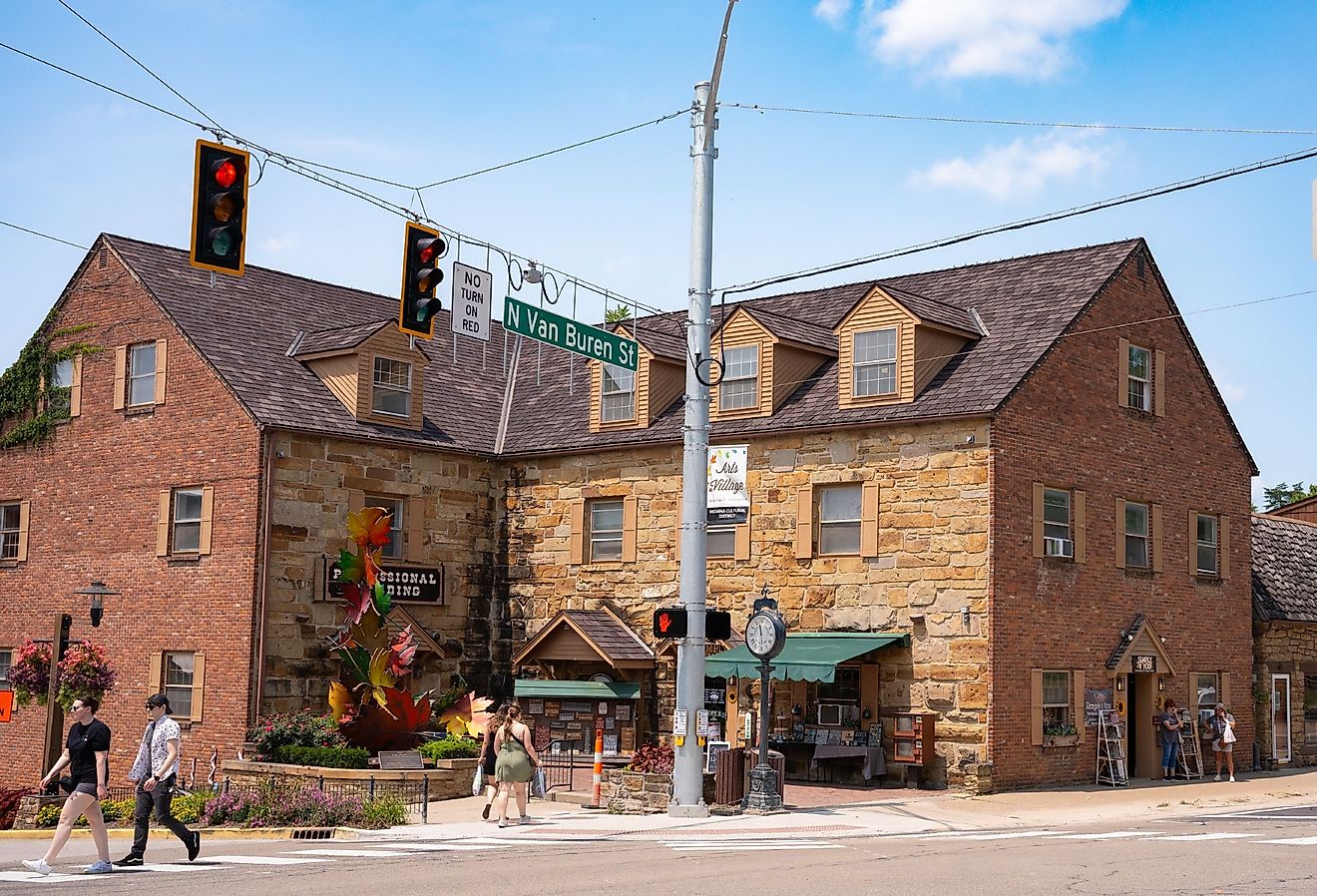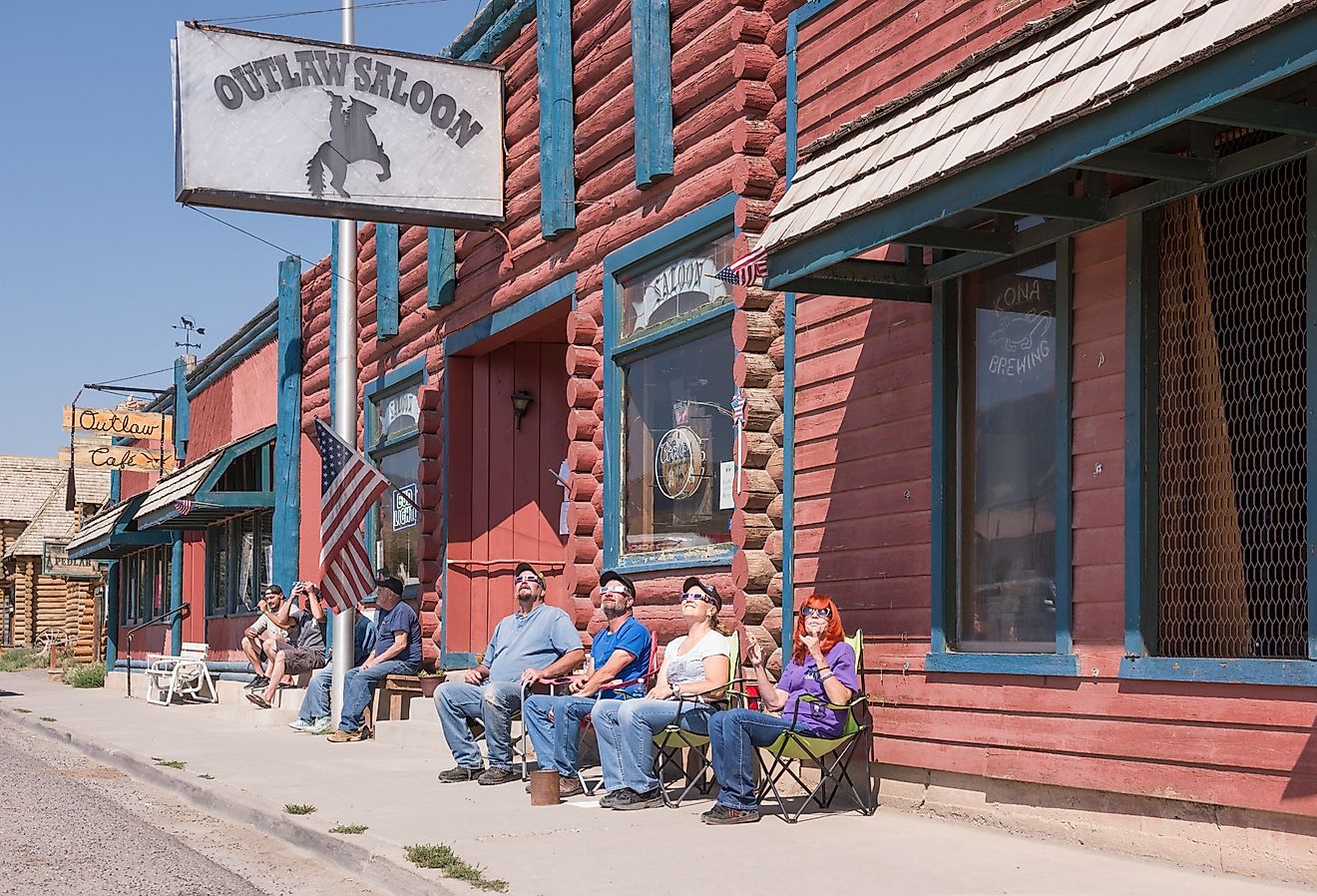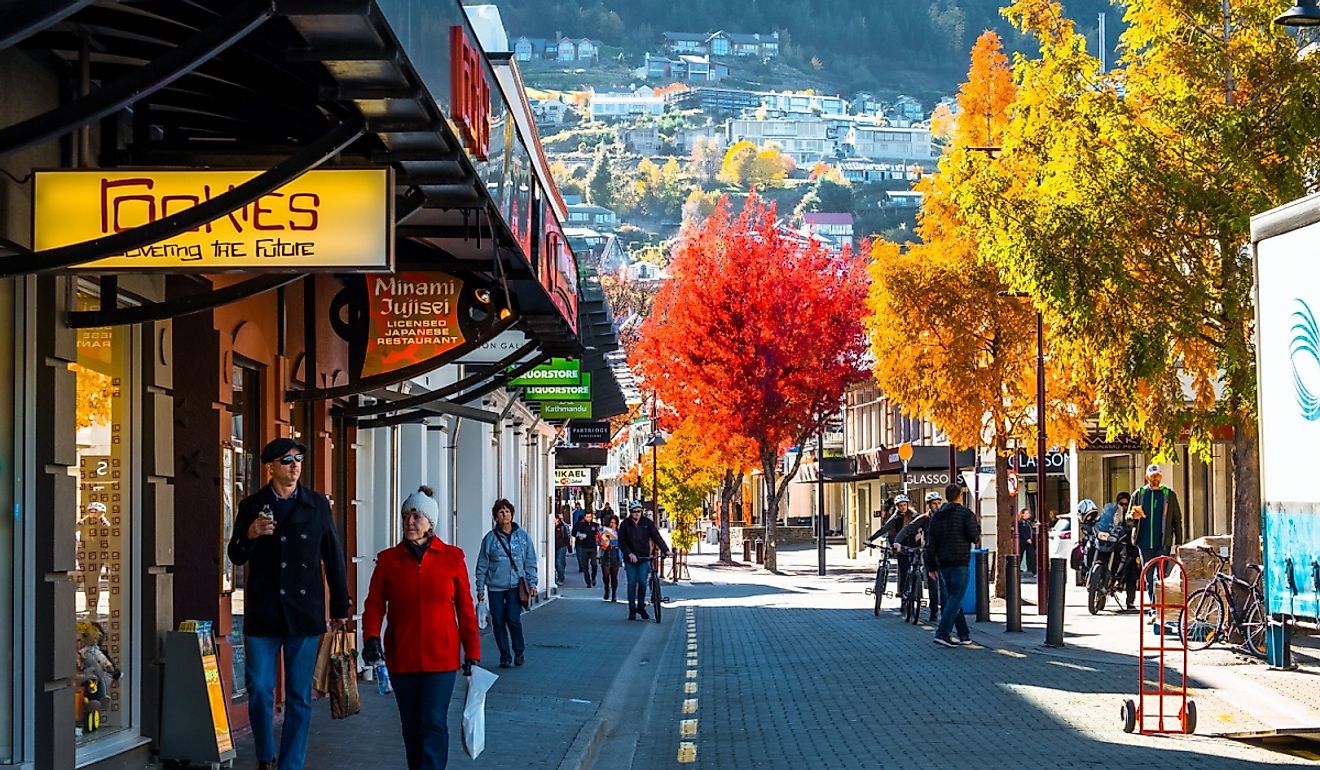
10 Of The Friendliest Towns In New Zealand
Ever dreamed of climbing humungous mountains, braving through lush sylvan woodlands, and traveling down scenic riverways as seen in The Lord of the Rings? Then head over to the nation of Aotearoa, the Māori name of New Zealand, where all your favorite fantasy films come to life. In some of the friendliest towns in New Zealand, you can see how the native cultures of the small island next to Australia continue to thrive next to more modern, European or foreign based attitudes. Where one can go trudging through one's own adventures and where some of the most unique wildlife can be admired, the friendliest small towns in New Zealand welcome one and all with the same wild energy and charm as a Haka. So, prepare your best traveling gear when exploring the most amicable towns in Aotearoa.
Taihape

Be happy in Taihape, the Gumboot Capital of New Zealand. This small town, lying beside the Hautapu River and in a bountiful farmland region in New Zealand’s North Island, has needed gumboots or rain and rubber boots when trudging through the thick bushes of the Rangitikei District. Taihape did not always start as a horticultural and agricultural community, as it used to be a coaching station in 1894 for a track leading east to the city of Hastings. The town was also known as Otaihape, a Maori word meaning the “abode of Tai the hunchback.”
Most people these days just go about their business taking in the lay of the land, often admiring the gigantic Gumboot Statue in the middle of Taihape. The townsfolk also celebrate the Gumboot Day festival every year in March, and you can certainly wear gumboots any time of day when you are visiting a number of scenic locations such as the lahars at Mount Ruapehu, Ruahine Forest Park, and the showpiece gardens of Titoki, Rongoiti, Waitoka, and Kiri Kiri. You might also fancy attending Taihape’s A&P agriculture show on the last weekend of January, or booking a room at one of the many fine lodgings in town like Gretna Hotel Taihape, Taihape Motels, or Coachman Motel. Either way, you will definitely be happy when you vacation in Taihape.
Wānaka

On the southern tip of Lake Wānaka lounges the wonderful town of Wānaka, so named from the word “wānanga” meaning “place of learning”. As a premier resort town in New Zealand’s South Island, Wānaka has improved and grown thanks to the efforts of the Kāi Tahu Whānui peoples and explorers from Europe such as Nathaniel Chalmers. In recent years, the town is renowned for its access to the snow-hatted mountains that New Zealand is famous for. Specifically, you can venture into a wilderness of glacial forests and high-altitude lakes at the Southern Alps' Mount Aspiring National Park, and partake in several skiing and snowboarding activities at both the Treble Cone Ski Resort and Cardrona Ski Resort.
People who prefer lower sea levels can go boating and fishing on Lake Hāwea and around the islands of Mou Waho, Stevenson, and Ruby. Photographers will undoubtedly be interested in taking snapshots of a few notable landmarks like #ThatWanakaTree, a solitary willow tree on Lake Wānaka, or at the Wanaka Lavender Farm. Better yet, challenge yourself to illusions and amusements at the Puzzling World, Wānaka’s best amusement park. Only 50 minutes away from Queenstown, consider spending your restful nights in beautiful accommodations such as the West Meadows Motel, Oasis Yurt Lodge, or The Dacha - Luxury Wanaka Residence.
Gore
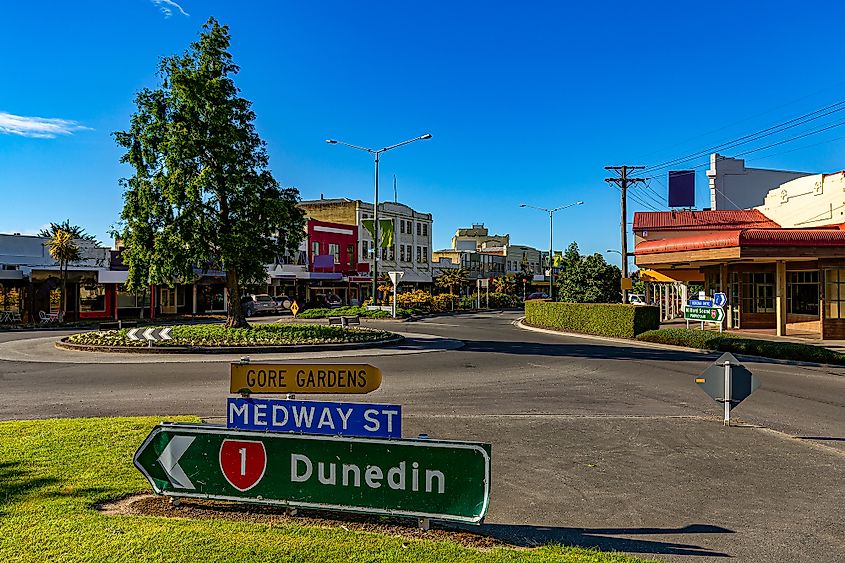
You will neither be bored nor gored in the adoring town of Gore. Traditionally known as Māruawai (“the Valley of Water”) after the Mataura River, Gore is plentiful with koura (freshwater crayfish), kākahi (freshwater mussels), native trout, weka, and dozens of other fish species located at various mahinga kai (food gathering sites). Since the area is the World’s Brown Trout Fishing Capital, you can certainly try your hand at fishing one of the many kinds of fish with permission from the Maori kaitiaki (guardians) of the Mataura Valley.
You can also go sojourning through the serene Hokonui Hills, whose Maori name is synonymous with moonshine whisky. However, Gore is most famous for being the events capital of the South Island. From the New Zealand Gold Guitar Awards and the New Zealand Line Dancing Championships every year in early June to the Hokonui Fashion Design Awards in late July, you will definitely adore Gore’s gorgeous festivities and events. So consider booking a room at either the Hokonui Bed & Breakfast or Croydon Lodge Hotel for a lengthier vacation in Gore.
Raglan

On the coast of the Waikato region, where the Tawatahi River spills out into the Tasman Sea, the humble abodes of Raglan shine beautifully beside the black sand shorelines of Ngarunui Beach, Ocean Beach, and Manu Bay. Since Raglan is one of the best destinations for surfing, you can appreciate the history of the most daring, surfing daredevils at the Raglan & District Museum in addition to a few apothecary articles and items from Raglan’s enigmatic past. Manu Bay, in particular, provides what some claim is the longest left-hand surf rides on the planet and was even featured in movies like The Endless Summer and Point Break.
Dozens of forest trails can lead you to several sublime landmarks near Raglan, such as Bridal Veil Falls and Taranaki Maunga, one of the North Island's highest mountains. Taking the Pipiwharauroa Trail will lead you to the wind turbines at the Te Uku wind farm or towards Te Ara Kakariki, the latest mountain bike track in Raglan. And if you ever get exhausted from your soulful sojourns, you can always sleep well and comfortable at the Nikau Sanctuary, The Queenslander Raglan, or Raglan Holiday Park.
Whakatāne

On the Whakatāne River about 56 miles east of the cities of Tauranga and Rotorua, one can find the wondrous small town of Whakatāne. At the Whakatāne Museum and Arts, one can marvel at the impeccable masterpieces showcasing the vibrant culture and attitudes of New Zealand. The townsfolk celebrate the Whakaari White Island eruption with the Whakaari Waiata Remembrance Concert each December. Taking the Ngā Tapuwae o Toi, or the “Footprints of Toi,” allows you to experience the magnificent breadth and depths of the Whakatāne District, particularly the mesmerizing beaches and waves located at Ōhope Beach.
Throughout Whakatāne, you might stumble upon three unique landmarks surrounding a historic figure named Toroa. Toroa’s father, Irakewa, charged his son in protecting the three landmarks—Te Wairere (Wairere Falls), Te Toka o Irakewa (Irakewa Rock), and Te Ana o Muriwai (Muriwai’s Cave)—and to this day the descendants of Toroa continue to protect Whakatāne’s treasured relics. Additionally, you can see the Wairaka Statue, Turuturu Roimata, and Whakatāne Heads atop a massive rock overlooking Ōtarawairere Bay.
You might also be interested in taking the Moutohora Island Sanctuary tours towards the distant Moutohora Island. Or, since the town happens to be the Kiwi Capital of the World, you can get a chance to see different species of kiwis at the Moutohorā Wildlife Sanctuary on Moutohorā/Whale Island. For those of you intrigued by Whakatāne indigenous and natural allures, you can always book a room at the Ocean View Motel, the Tuscany Villas Whakatane, or the 37 The Landing Motel.
Akaroa
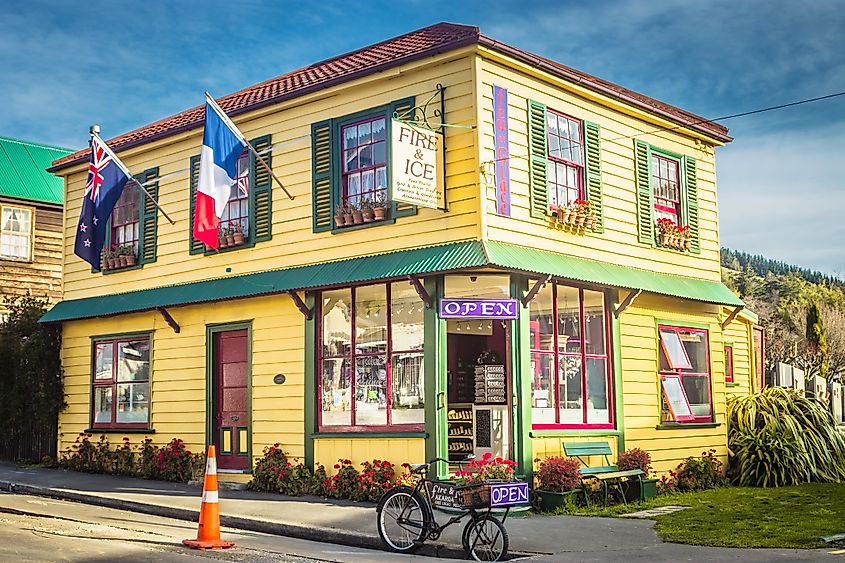
Approximately an hour away from the city of Christchurch, Akaroa was founded in 1840 to be the administrative center of France for the Banks Peninsula, which was annexed from the rest of Aotearoa. With the town’s French cuisines in French bistros along Rue Jolie and the Rue Lavaud, you will feel like walking through the chic streets of Paris. Notwithstanding the Francophonic atmosphere and architecture all over Akaroa, you can admire the astonishing Ōnuku Church which merges Christian architectural designs with Māori carvings.
The Akaroa Museum gives newcomers insights into two of Akaroa’s most famous figures—first, Frank Worsley, the captain of the Endurance who aided Earnest Shackleton’s tragic trip to Antarctica, and second, a 19th-century pirate named William “Bully” Hayes. In the waters of Akaroa Harbor, you might be lucky to spot the rare Hector’s Dolphin playing about. Or perhaps you might adore the Little Blue Penguins or fairy penguins during the Pōhatu Penguins tour and even the alpacas Shamarra Alpacas. No need to worry about accommodations, not when places like Newton Heights Bed and Breakfast and Tresori Motor Lodge & Apartments will have you covered day and night.
Queenstown
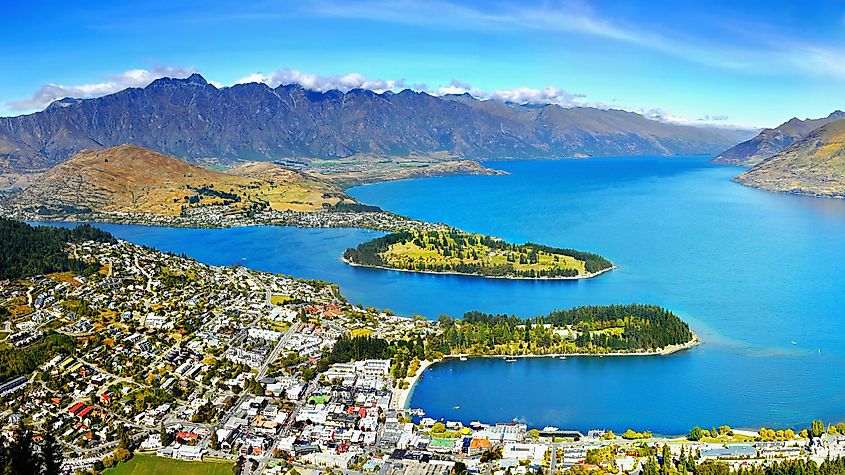
Queenstown, approximately 41 miles from Wānaka, has been a popular site for tourists and filmmakers alike. With its scenic Lake Wakatipu and the Southern Alps as a background, several recognizable movies like The Lord of the Rings, The Chronicles of Narnia, and most recently Mission: Impossible six were all filmed in Queenstown’s dynamic and powerful settings. In the Southern Alps, you can journey to destinations like the Soho Basin, Coronet Peak, and The Remarkables for skiing and snowboarding activities.
Meanwhile, places like Kawarau Gorge Suspension Bridge provide opportunities for bungee jumping, whereas the Shotover River and Dart River are perfect waterways for jet-boating. At Kiwi Park, you can go stargazing at night to admire the full depths of the Milky Way galaxy or even explore some of the historic mining towns and vibrant vineyards dotted all over the region. If you are still feeling regal for receiving such a royal retreat in Queenstown, then you should consider spending your lovely nights at either the Stay of Queenstown, Kamana Lakehouse, or Mercure Queenstown Resort.
Russell

Russell, which also goes by the Māori name Kororāreka, was the first permanent seaport and settlement in New Zealand established by colonizers from Europe. Since its founding in 1843 under Lieutenant Governor William Hobson, Russell has retained many of its British colonial architecture at a time when the town was the first capital of New Zealand. With its location on the Bay of Islands, the town was considered “The hellhole of the Pacific” because it was a shore leave destination for whalers, traders, and sailors in the 19th century.
Of course, you will not see Russell as a hellhole once you go exploring its many heavenly attractions, such as the Catholic Mission “Pompallier,” New Zealand’s oldest surviving Roman Catholic building, or Christ Church, which carries some of the musket ball holes left from the New Zealand Land Wars. For sceneries, you can stand atop Flagstaff Hill see as much of the Bay of Islands as possible or head on down to Tapeka Point Beach for fun and sun. As for lodgings, you can pick between the Duke Of Marlborough Hotel, the Hananui Lodge & Apartments, or the Bellrock Lodge.
Kaikōura

Kaikōura derives from the Māori words “kai” which means food and “kōura" meaning crayfish. This is mainly because happens to be the best place to eat the most delicious crayfish in New Zealand. Additionally, Kaikōura is one of the best sites for seeing dolphins and sperm whales on a migratory path through the Pacific Ocean. At the Kaikōura Peninsula’s tip, one can find a whole colony of seals lounging on the rocks.
From all over the Seaward Kaikōura Range, you can take ecozip adventures to marvel at the biodiversity and wilderness features around Kaikōura. Adventurers and trailblazers might also want to experience the Mount Lyford ski area and the Clarence River rafting experience. The 1800s Fyffe House, made out of actual whalebones, discusses the town’s history in whaling. Elsewhere, the Llama Trekking experience gives you a chance to see New Zealand’s llamas. For those of you intrigued by the town’s unique animals, you can certainly spend your vacation in Kaikōura, particularly in welcoming establishments like the Nikau Lodge, the Dusky Lodge, or Sudima Kaikōura.
Hokitika

Hokitika, lauded as “The Place to Regenerate,” will have you renewed and restored for more adventures on New Zealand’s West Coast. Whether you are gallivanting along the Hokitika River or the Taramakau River, you might get a chance to see pounamu (greenstone) in locations like the Arahura River. Hokitika first started as a gold-mining town during the “Australian invasion,” but over the years, it has become a popular beach destination overlooking the Tasman Sea.
One can take selfies or groupies of a sign made out of pieces of wood spelling out “Hokitika,” which originates from the Māori term “return in a straight line.” The Hokitika Bar is a well-known sandbar that shifts with each tide and is the cause of many shipwrecks in the old days. At the end of summer, you ought to attend the annual Wildfoods Festival to soak in Hokitika’s vibrant atmosphere, or you can immerse yourself in the past when touring the historic Carnegie building or along the Pounamu Pathway. At night, you can either see the beauty of bioluminescence at the Glow-worm Dell or sleep dreamily at either the Kaniere Hotel, the Woodland Glen Lodge, or Amberlea B&B.
New Zealand may not be a new destination for a lot of vacationers, but it is certainly one of the top ten favorites and familiar vacation spots on Earth. From Hokitika’s regenerative qualities to Queenstown’s filmic settings and landscapes, some of the friendliest towns in New Zealand are the most memorable and remarkable locations in an island nation filled with unforgettable features and activities. You will be awed by Whakatāne’s indigenous attitudes and connections, enlightened by Akaroa’s histories and historical figures, and delighted by the New Zealand animals unique to places like Kaikōura and more. Feel welcomed and at home in the friendliest small towns in New Zealand.
